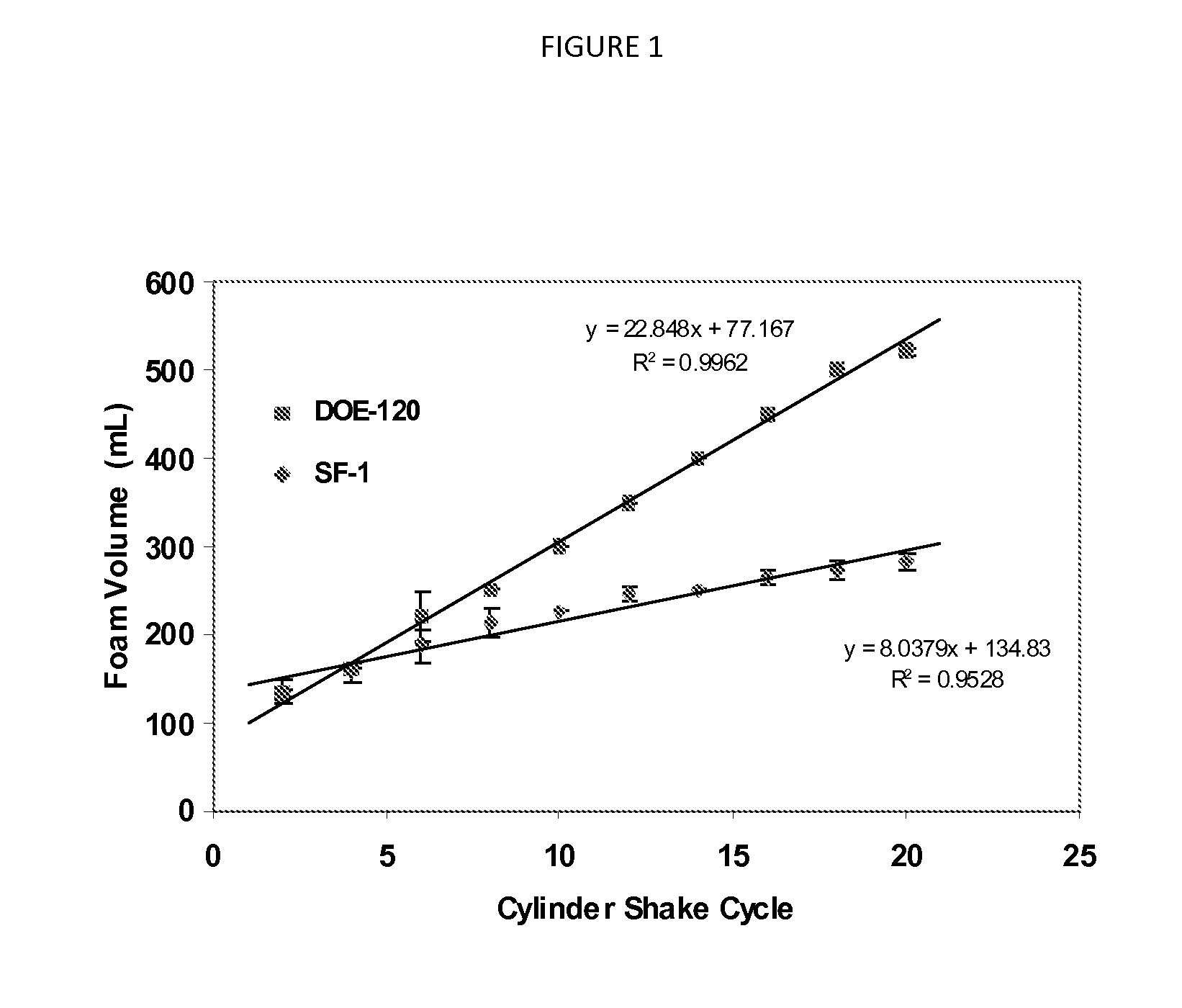Superhydrophilic amphiphilic copolymers and processes for making the same
a technology of amphiphilic copolymers and copolymers, which is applied in the field of superhydrophilic amphiphilic copolymers and processes for making the same, can solve the problems of increasing irritation of skin and eyes with synthetic detergents, undesirable use on or near skin and/or eyes, etc., and achieves the effect of low irritation
- Summary
- Abstract
- Description
- Claims
- Application Information
AI Technical Summary
Benefits of technology
Problems solved by technology
Method used
Image
Examples
examples
[0232]The following Drop Shape Analysis (“DSA”), Dynamic Light Scattering (“DLS”), Polymer Foam, Formulation Foam, Solution Viscosity, Formulation Flash Foam, and Formulation Viscosity tests are used in the instant methods and in the following Examples. In particular, as described above, the DSA test is used to determine the degree to which a polymeric material (e.g. a SAC) in a composition reduces surface tension, according to the present invention; the DLS test, Polymer Foam Test, and Solution Viscosity may be used to determine the suitability of a particular SAC to provide reduced irritation and high foam; and the Formulation Flash Foam Test and Formulation Viscosity tests may be used to determine degree to which a particular composition can generate high foam, and / or provide beneficial viscosity, which is often desirable for cleansing compositions.
[0233]Unless otherwise indicated, the amounts of ingredients in the Example and Comparative compositions listed in the tables are exp...
example 41
The Preparation of an Aqueous Solution of Native (Unmodified) Tapioca Starch
[0285]An aqueous solution of native (unmodified) tapioca was prepared by suspending 10 g dry native tapioca starch in 200 g water. The mixture was heated at 80° C. with stirring for 30 minutes. The resulting thick and translucent solution was allowed to cool.
example 42
The Preparation of an Aqueous Solution of a Tapioca Starch Dextrin
[0286]An aqueous solution of tapioca starch dextrin was prepared by suspending 10 g tapioca dextrin in 100 g water. The suspension was mixed without heating until the power dissolved. The resulting solution was slightly hazy.
PUM
| Property | Measurement | Unit |
|---|---|---|
| surface tension | aaaaa | aaaaa |
| “Solution Viscosity Test | aaaaa | aaaaa |
| amphiphilic mol % | aaaaa | aaaaa |
Abstract
Description
Claims
Application Information
 Login to View More
Login to View More - R&D
- Intellectual Property
- Life Sciences
- Materials
- Tech Scout
- Unparalleled Data Quality
- Higher Quality Content
- 60% Fewer Hallucinations
Browse by: Latest US Patents, China's latest patents, Technical Efficacy Thesaurus, Application Domain, Technology Topic, Popular Technical Reports.
© 2025 PatSnap. All rights reserved.Legal|Privacy policy|Modern Slavery Act Transparency Statement|Sitemap|About US| Contact US: help@patsnap.com



